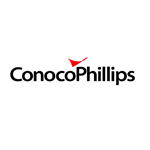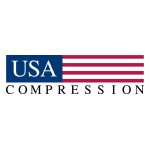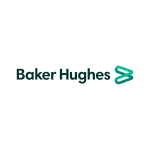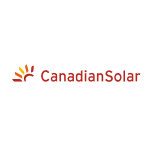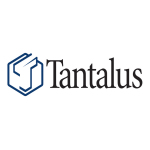-
Fourth quarter GAAP net sales of $4.6 billion were down 8 percent; underlying sales were down 9 percent, in-line with management guidance. Full year GAAP net sales of $16.8 billion were down 9 percent; underlying sales were down 8 percent, also in-line with management guidance.
-
Fourth quarter GAAP EPS was $1.20, up 3 percent from the year prior; adjusted EPS, which excludes restructuring and certain tax benefits, was $1.10, down 4 percent. Full year GAAP EPS was $3.24, down 13 percent from the year prior, and ahead of guidance of $2.80 to $2.95; adjusted EPS was $3.46, down 6 percent, and ahead of guidance of $3.20 to $3.35.
-
Delivered strong operating cash flow of $1.23 billion in the quarter, up 2 percent, and $3.08 billion for the year, up 3 percent.
-
Delivered strong free cash flow of $1.02 billion in the quarter, up 2 percent, and $2.55 billion for the year, up 6 percent.
-
Initiated $73 million of restructuring and related actions in the quarter, totaling $304 million for the year, continuing aggressive execution of the comprehensive cost reset program to return to record adjusted EBIT margins.
-
Completed 64 consecutive years of increased dividends per share and plan to announce a 2 cent increase for 2021, after today's Board of Directors meeting.
ST. LOUIS--(BUSINESS WIRE)--Emerson (NYSE: EMR) today reported results for the fourth fiscal quarter and fiscal year ended September 30, 2020.
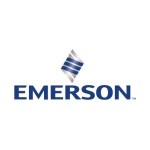
Fourth quarter GAAP net sales were down 8 percent and underlying sales were down 9 percent excluding favorable currency of 1 percent. Overall revenue declines were in-line with management guidance, with Automation Solutions finishing at the low end of expectations and Commercial & Residential Solutions finishing above expectations. Overall, the company continued to see demand challenges most acute in North American markets, which were down in the mid-teens. Europe was down mid-single digits, and Asia, Middle East & Africa was most resilient, down low-single digits.
Emerson finished the year with September trailing three-month underlying orders down 11 percent, in-line with our expectation for the second half of the year, as strength in residential-facing markets, life sciences, medical, and food & beverage was more than offset by ongoing demand weakness in most other process and discrete industries. Importantly, Commercial & Residential Solutions trailing three-month underlying orders grew by 6 percent, bolstered by residential and big-box oriented retail businesses, and a return to orders growth in the cold chain business.
Fourth quarter gross profit margin of 41.3 percent was down 150 basis points from the previous year primarily due to volume deleverage and mix. Pretax margin of 16.8 percent and EBIT margin of 17.7 percent were up 20 basis points and 30 basis points, respectively. Adjusted EBIT margin, which excludes restructuring and related costs, was 19.3 percent for the quarter, up 80 basis points, supported by accelerated cost reduction actions.
GAAP earnings per share was $1.20 for the quarter and adjusted earnings per share was $1.10. Earnings in the quarter benefited from the ongoing restructuring and cost reduction actions.
Operating cash flow was $1.23 billion, up 2 percent for the quarter. Full year operating cash flow was $3.08 billion, up 3 percent. Free cash flow was $1.02 billion, up 2 percent for the quarter, resulting in exceptional free cash flow conversion of 140 percent. Full year free cash flow was $2.55 billion, up 6 percent, resulting in strong free cash flow conversion of 128 percent driven by rigorous operational execution across the two business platforms.
“The year took a dramatic turn in March, as the virus rapidly spread and impacted all of our major markets,” said Emerson Chairman and CEO David N. Farr. “Despite unforeseen once-in-a-career challenges and circumstances, Emerson was relatively well prepared and positioned. We had already begun our focus on cost containment actions and planning for a low-growth year, as was laid out during our February 2020 Investor Day. And our well-established regionalization strategy - maximizing sourcing, manufacturing, and distribution of products and solutions within regional end markets - was instrumental to maintaining our supply chain integrity as uncertainty intensified and economies halted. Amidst all the challenges, we exceeded our second quarter reset financial forecast in sales, EBITDA, and cash flow.
“As the situation rapidly evolved, Emerson's leadership team and global operations maintained focus on our key priority: to safely serve our customers and ensure business continuity in essential industries like power, life sciences, food & beverage, home comfort and safety, water, and energy. I am exceptionally proud of the way our employees rose to the challenge, going above and beyond to help our customers navigate the turbulence. Although there is clearly more work to be done as we enter a new fiscal year, I want to thank our employees, customers, shareholders, and Board of Directors for their unwavering commitment and partnership as we all manage this dynamic period in history.
"Although the COVID-19 virus has not yet subsided, the Emerson global team has learned to operate safely and effectively, in person, in this environment. Emerson's offices and facilities are open with employees safely working on site."
Business Platform Results
Automation Solutions net sales decreased 11 percent in the quarter, with underlying sales also down 11 percent. In the Americas, underlying sales were down 23 percent, with North America down over 20 percent, as continued broad-based demand challenges were partially offset by momentum in life sciences, food & beverage, and semiconductor. Europe underlying sales were down 6 percent. Asia, Middle East & Africa underlying sales returned to low single digit growth, as strength in Southeast Asia more than offset declines in China and the Middle East.
September trailing three-month underlying orders were down 19 percent, reflecting ongoing weakness across most end markets, with the exception of life sciences, medical, food & beverage, and semiconductor. Geographically, the Americas continue to be challenging, down nearly 30 percent. Asia, Middle East & Africa declined by 11 percent while Europe declined 8 percent. China orders were up 2 percent, however. Importantly, backlog in the business converted ahead of expectations, with a $400 million reduction from last quarter, leaving the balance at approximately $4.7 billion. Overall, we believe that the Automation Solutions business has reached and is trending along the trough of the demand curve. While the demand environment appears to be stabilizing, we have not yet seen meaningful indications of demand picking up in any key North American markets.
Segment EBIT margin decreased 140 basis points to 17.0 percent, as savings from cost actions and favorable price-cost was more than offset by volume deleverage and mix. Adjusted segment EBIT margin, which excludes restructuring and related costs, decreased 80 basis points to 18.7 percent while adjusted segment EBITDA margin decreased only 20 basis points, to 23.5 percent. Total restructuring and related actions in the quarter were $52 million, totaling $244 million for the full year.
Commercial & Residential Solutions net sales decreased 3 percent in the quarter, with underlying sales also down 3 percent. Underlying sales in the Americas were down 1 percent, reflecting improvement in residential and big-box retail channels. Similarly, Europe was down slightly at 1 percent as commercial market weakness was offset by continued heat pump demand due to sustainability regulations and customer technology preferences. Asia, Middle East & Africa was down 13 percent, with China down low double digits.
September trailing three-month underlying orders were up 6 percent, reflecting a sharp rebound in residential-facing markets and initial signs of recovery in cold chain markets. Meanwhile, professional tools markets remained weaker, but improving, as we move into our first quarter of fiscal 2021. Geographically, North America increased by 12 percent as residential and big-box retail markets sharply rebounded. Additionally, cold chain markets showed signs of stabilizing. Asia, Middle East & Africa orders declined by 9 percent, while China was down low double digits. Europe grew by 8 percent, as demand for heat pump solutions continued to show momentum due to sustainability regulations and customer technology preferences.
Segment EBIT margin decreased 10 basis points to 20.7 percent as cost reductions and favorable price cost effectively offset deleverage. Adjusted segment EBIT margin, which excludes restructuring and related costs, increased 50 basis points to 22.1 percent, and adjusted segment EBITDA margin increased 120 basis points to 26.6 percent. Total restructuring and related actions in the quarter were $21 million, with a total of $52 million for the full year.
2021 Capital Allocation and Outlook
There is no change to the capital allocation framework set forth during the Investor Conference in February including the return of 50 to 60 percent of cash flow to shareholders in the form of dividends and share repurchases over the long term. Share repurchases were suspended in fiscal year 2020, with approximately $950 million repurchased, due to the changing demand environment associated with COVID-19. Emerson intends to resume share repurchases in fiscal year 2021 in the amount of $500 million to $1 billion, while concurrently maintaining optionality for further acquisitions should the opportunity arise. This allocation excludes the funding of the previously announced acquisition of Open Systems International Inc. which closed on Oct 1, 2020.
Management believes it is appropriate to assume a conservative forecast for the 2021 macroeconomic environment given the current uncertainty, and expects a slow-but-steady improvement in demand over the course of 2021 as economies, companies, and communities continue to gradually reopen and learn to safely operate with the virus. We also expect to see continued progress with regard to vaccine development, manufacturing, and distribution over the course of the fiscal year.
Within this framework, as management forecasted in April 2020, we expect overall revenue to return to growth in the third quarter of 2021. Commercial & Residential Solutions is expected to return to growth earlier than originally expected, while Automation Solutions is expected to return to growth later in the year. Due to the delayed recovery in many automation markets, we are increasing restructuring spend within Automation Solutions, resulting in a total company restructuring spend of over $200 million in 2021. Lastly, the guidance assumes no major operational or supply chain disruptions and oil prices in the $35 to $50 range during this period.
The following table summarizes the 2021 guidance framework:
2021 Guidance
|
Net Sales Growth
|
1% - 4%
|
Operating Cash Flow
|
~$3.1B
|
Automation Solutions
|
(1%) - 2%
|
Capital Spend
|
~$600M
|
Commercial & Residential Solutions
|
5% - 8%
|
Free Cash Flow
|
~$2.5B
|
|
|
|
|
Underlying Sales Growth
|
(1%) - 2%
|
Dividend
|
~$1.2B
|
Automation Solutions
|
(4%) - (1%)
|
Share Repurchase
|
|
Commercial & Residential Solutions
|
4% - 7%
|
/ M&A (excl. OSI)1
|
$500M - $1.0B
|
|
|
|
|
GAAP EPS
|
$3.11 +/- $.05
|
Tax Rate
|
~22.5%
|
Adjusted EPS
|
$3.45 +/- $.05
|
Restructuring Actions
|
~$200M+
|
Note 1: OSI Inc. closed on Oct. 1, 2020.
“Despite the uncertainties and challenges from COVID-19, we ended the year with orders and sales squarely in-line with second quarter guidance,” Farr said. “Most importantly, we were able to deliver strong profitability, earnings, and cash flow, driven by our ongoing robust cost containment and restructuring actions. I’m proud of the team for executing on this challenging but vital work. As the broader macroeconomic outlook begins to stabilize, we are well-positioned with a more agile and lean cost structure to sustain and build upon our strong profitability, particularly as late cycle end markets begin their recovery.
“In conclusion, the fiscal year wasn’t just about reacting to the pandemic. We also continued to invest and took bold action to build on our innovation and technology footprint of the future, with three strategic acquisitions: American Governor, Open Systems International Inc. and Progea. These core technologies and capabilities will strengthen our position in attractive and growing marketplaces including software, renewable energy, and transmission & distribution. Digital transformation initiatives continue to gain momentum among many of our industrial customers, and these portfolio enhancements will enable us to help more customers adapt and excel within new operating paradigms.”
Upcoming Investor Events
Today, beginning at 2 p.m. Eastern Time, Emerson management will discuss the fourth quarter and full year 2020 results during an investor conference call. Please plan for a 90 minute call. Participants can access a live webcast available at www.emerson.com/financial at the time of the call. A replay of the call will remain available for 90 days. Conference call slides will be posted in advance of the call on the company website.
Forward-Looking and Cautionary Statements
Statements in this press release that are not strictly historical may be “forward-looking” statements, which involve risks and uncertainties, and Emerson undertakes no obligation to update any such statements to reflect later developments. These risks and uncertainties include the scope, duration and ultimate impact of the COVID-19 pandemic as well as economic and currency conditions, market demand, including related to the pandemic and oil and gas price declines and volatility, pricing, protection of intellectual property, cybersecurity, tariffs, competitive and technological factors, among others, as set forth in the Company's most recent Annual Report on Form 10-K and subsequent reports filed with the SEC.
(tables attached)
|
|
|
|
|
Table 1
|
EMERSON AND SUBSIDIARIES
|
CONSOLIDATED OPERATING RESULTS
|
(AMOUNTS IN MILLIONS EXCEPT PER SHARE, UNAUDITED)
|
|
|
|
|
|
|
|
Quarter Ended Sept 30
|
|
Percent
|
|
2019
|
|
2020
|
|
Change
|
|
|
|
|
|
|
Net sales
|
$4,971
|
|
$4,558
|
|
(8)%
|
Costs and expenses:
|
|
|
|
|
|
Cost of sales
|
2,843
|
|
2,676
|
|
|
SG&A expenses
|
1,109
|
|
946
|
|
|
Other deductions, net
|
153
|
|
131
|
|
|
Interest expense, net
|
40
|
|
40
|
|
|
Earnings before income taxes
|
826
|
|
765
|
|
(7)%
|
Income taxes
|
102
|
|
35
|
|
|
Net earnings
|
724
|
|
730
|
|
|
Less: Noncontrolling interests in earnings of subsidiaries
|
7
|
|
7
|
|
|
Net earnings common stockholders
|
$717
|
|
$723
|
|
1%
|
|
|
|
|
|
|
Diluted avg. shares outstanding
|
617.5
|
|
601.1
|
|
|
|
|
|
|
|
|
Diluted earnings per share common share
|
$1.16
|
|
$1.20
|
|
3%
|
|
|
|
|
|
|
|
|
|
|
|
|
|
Quarter Ended Sept 30
|
|
|
|
2019
|
|
2020
|
|
|
Other deductions, net
|
|
|
|
|
|
Amortization of intangibles
|
$61
|
|
$61
|
|
|
Restructuring costs
|
55
|
|
68
|
|
|
Other
|
37
|
|
2
|
|
|
Total
|
$153
|
|
$131
|
|
|
|
|
|
|
|
Table 2
|
EMERSON AND SUBSIDIARIES
|
CONSOLIDATED OPERATING RESULTS
|
(AMOUNTS IN MILLIONS EXCEPT PER SHARE, UNAUDITED)
|
|
|
|
|
|
|
|
Years Ended Sept 30
|
|
Percent
|
|
2019
|
|
2020
|
|
Change
|
|
|
|
|
|
|
Net sales
|
$18,372
|
|
|
$16,785
|
|
|
(9)%
|
Costs and expenses:
|
|
|
|
|
|
Cost of sales
|
10,557
|
|
|
9,776
|
|
|
|
SG&A expenses
|
4,457
|
|
|
3,986
|
|
|
|
Other deductions, net
|
325
|
|
|
532
|
|
|
|
Interest expense, net
|
174
|
|
|
156
|
|
|
|
Earnings before income taxes
|
2,859
|
|
|
2,335
|
|
|
(18)%
|
Income taxes
|
531
|
|
|
345
|
|
|
|
Net earnings
|
2,328
|
|
|
1,990
|
|
|
|
Less: Noncontrolling interests in earnings of subsidiaries
|
22
|
|
|
25
|
|
|
|
Net earnings common stockholders
|
$2,306
|
|
|
$1,965
|
|
|
(15)%
|
|
|
|
|
|
|
Diluted avg. shares outstanding
|
620.6
|
|
|
606.6
|
|
|
|
|
|
|
|
|
|
Diluted earnings per share common share
|
$3.71
|
|
|
$3.24
|
|
|
(13)%
|
|
|
|
|
|
|
|
|
|
|
|
|
|
Years Ended Sept 30
|
|
|
|
2019
|
|
2020
|
|
|
Other deductions, net
|
|
|
|
|
|
Amortization of intangibles
|
$238
|
|
|
$239
|
|
|
|
Restructuring costs
|
95
|
|
|
284
|
|
|
|
Special advisory fees
|
—
|
|
|
13
|
|
|
|
Other
|
(8
|
)
|
|
(4
|
)
|
|
|
Total
|
$325
|
|
|
$532
|
|
|
|
|
|
|
Table 3
|
EMERSON AND SUBSIDIARIES
|
CONSOLIDATED BALANCE SHEETS
|
(DOLLARS IN MILLIONS, UNAUDITED)
|
|
|
|
|
|
Years ended Sept 30
|
|
2019
|
|
2020
|
Assets
|
|
|
|
Cash and equivalents
|
$1,494
|
|
|
$3,315
|
|
Receivables, net
|
2,985
|
|
|
2,802
|
|
Inventories
|
1,880
|
|
|
1,928
|
|
Other current assets
|
780
|
|
|
761
|
|
Total current assets
|
7,139
|
|
|
8,806
|
|
Property, plant & equipment, net
|
3,642
|
|
|
3,688
|
|
Goodwill
|
6,536
|
|
|
6,734
|
|
Other intangible assets
|
2,615
|
|
|
2,468
|
|
Other
|
565
|
|
|
1,186
|
|
Total assets
|
$20,497
|
|
|
$22,882
|
|
|
|
|
|
Liabilities and equity
|
|
|
|
Short-term borrowings and current maturities of long-term debt
|
$1,444
|
|
|
$1,160
|
|
Accounts payable
|
1,874
|
|
|
1,715
|
|
Accrued expenses
|
2,658
|
|
|
2,910
|
|
Total current liabilities
|
5,976
|
|
|
5,785
|
|
Long-term debt
|
4,277
|
|
|
6,326
|
|
Other liabilities
|
1,971
|
|
|
2,324
|
|
Total equity
|
8,273
|
|
|
8,447
|
|
Total liabilities and equity
|
$20,497
|
|
|
$22,882
|
|
|
|
|
|
Table 4
|
EMERSON AND SUBSIDIARIES
|
CONSOLIDATED STATEMENTS OF CASH FLOWS
|
(DOLLARS IN MILLIONS, UNAUDITED)
|
|
|
|
|
|
|
Years Ended Sept 30
|
|
|
2019
|
|
2020
|
Operating activities
|
|
|
|
|
Net earnings
|
|
$2,328
|
|
$1,990
|
Adjustments to reconcile net earnings to net cash provided by operating activities:
|
|
|
|
|
Depreciation and amortization
|
|
822
|
|
|
854
|
|
Stock compensation
|
|
120
|
|
|
110
|
|
Pension expense
|
|
2
|
|
|
67
|
|
Pension funding
|
|
(60
|
)
|
|
(66
|
)
|
Changes in operating working capital
|
|
(150
|
)
|
|
148
|
|
Other, net
|
|
(56
|
)
|
|
(20
|
)
|
Cash provided by operating activities
|
|
3,006
|
|
|
3,083
|
|
|
|
|
|
|
Investing activities
|
|
|
|
|
Capital expenditures
|
|
(594
|
)
|
|
(538
|
)
|
Purchases of businesses, net of cash and equivalents acquired
|
|
(469
|
)
|
|
(126
|
)
|
Divestitures of businesses
|
|
14
|
|
|
—
|
|
Other, net
|
|
(125
|
)
|
|
(76
|
)
|
Cash used in investing activities
|
|
(1,174
|
)
|
|
(740
|
)
|
|
|
|
|
|
Financing activities
|
|
|
|
|
Net increase in short-term borrowings
|
|
(6
|
)
|
|
(90
|
)
|
Proceeds from short-term borrowings greater than three months
|
|
—
|
|
|
1,043
|
|
Payments of short-term borrowings greater than three months
|
|
—
|
|
|
(1,043
|
)
|
Proceeds from long-term debt
|
|
1,691
|
|
|
2,233
|
|
Payments of long-term debt
|
|
(656
|
)
|
|
(503
|
)
|
Dividends paid
|
|
(1,209
|
)
|
|
(1,209
|
)
|
Purchases of common stock
|
|
(1,250
|
)
|
|
(942
|
)
|
Other, net
|
|
39
|
|
|
2
|
|
Cash used in financing activities
|
|
(1,391
|
)
|
|
(509
|
)
|
|
|
|
|
|
Effect of exchange rate changes on cash and equivalents
|
|
(40
|
)
|
|
(13
|
)
|
Increase in cash and equivalents
|
|
401
|
|
|
1,821
|
|
Beginning cash and equivalents
|
|
1,093
|
|
|
1,494
|
|
Ending cash and equivalents
|
|
$1,494
|
|
$3,315
|
|
|
|
|
|
|
|
|
Table 5
|
EMERSON AND SUBSIDIARIES
|
SEGMENT SALES AND EARNINGS
|
(DOLLARS IN MILLIONS, UNAUDITED)
|
|
|
|
|
|
Quarter Ended Sept 30
|
|
2019
|
|
2020
|
Sales
|
|
|
|
Automation Solutions
|
$3,368
|
|
|
$3,005
|
|
|
|
|
|
Climate Technologies
|
1,142
|
|
|
1,111
|
|
Tools & Home Products
|
466
|
|
|
444
|
|
Commercial & Residential Solutions
|
1,608
|
|
|
1,555
|
|
|
|
|
|
Eliminations
|
(5
|
)
|
|
(2
|
)
|
Net sales
|
$4,971
|
|
|
$4,558
|
|
|
|
|
|
Earnings
|
|
|
|
Automation Solutions
|
$619
|
|
|
$511
|
|
|
|
|
|
Climate Technologies
|
233
|
|
|
238
|
|
Tools & Home Products
|
102
|
|
|
84
|
|
Commercial & Residential Solutions
|
335
|
|
|
322
|
|
|
|
|
|
Stock compensation
|
(37
|
)
|
|
(41
|
)
|
Unallocated pension and postretirement costs
|
27
|
|
|
16
|
|
Corporate and other
|
(78
|
)
|
|
(3
|
)
|
Interest expense, net
|
(40
|
)
|
|
(40
|
)
|
Earnings before income taxes
|
$826
|
|
|
$765
|
|
|
|
|
|
Restructuring costs
|
|
|
|
Automation Solutions
|
$39
|
|
|
$50
|
|
|
|
|
|
Climate Technologies
|
12
|
|
|
9
|
|
Tools & Home Products
|
2
|
|
|
9
|
|
Commercial & Residential Solutions
|
14
|
|
|
18
|
|
|
|
|
|
Corporate
|
2
|
|
|
—
|
|
Total
|
$55
|
|
|
$68
|
|
The table above does not include $5 of costs related to restructuring actions that were reported in cost of sales in the fourth quarter of fiscal 2020.
|
|
|
|
|
Depreciation and Amortization
|
|
|
|
Automation Solutions
|
$142
|
|
|
$143
|
|
|
|
|
|
Climate Technologies
|
44
|
|
|
51
|
|
Tools & Home Products
|
17
|
|
|
19
|
|
Commercial & Residential Solutions
|
61
|
|
|
70
|
|
|
|
|
|
Corporate and other
|
10
|
|
|
10
|
|
Total
|
$213
|
|
|
$223
|
|
|
|
|
Table 6
|
EMERSON AND SUBSIDIARIES
|
SEGMENT SALES AND EARNINGS
|
(DOLLARS IN MILLIONS, UNAUDITED)
|
|
|
|
|
|
Years Ended Sept 30
|
|
2019
|
|
2020
|
Sales
|
|
|
|
Automation Solutions
|
$12,202
|
|
|
$11,155
|
|
|
|
|
|
Climate Technologies
|
4,313
|
|
|
3,980
|
|
Tools & Home Products
|
1,856
|
|
|
1,663
|
|
Commercial & Residential Solutions
|
6,169
|
|
|
5,643
|
|
|
|
|
|
Eliminations
|
1
|
|
|
(13
|
)
|
Net sales
|
$18,372
|
|
|
$16,785
|
|
|
|
|
|
Earnings
|
|
|
|
Automation Solutions
|
$1,947
|
|
|
$1,523
|
|
|
|
|
|
Climate Technologies
|
883
|
|
|
801
|
|
Tools & Home Products
|
388
|
|
|
317
|
|
Commercial & Residential Solutions
|
1,271
|
|
|
1,118
|
|
|
|
|
|
Stock compensation
|
(120
|
)
|
|
(110
|
)
|
Unallocated pension and postretirement costs
|
108
|
|
|
53
|
|
Corporate and other
|
(173
|
)
|
|
(93
|
)
|
Interest expense, net
|
(174
|
)
|
|
(156
|
)
|
Earnings before income taxes
|
$2,859
|
|
|
$2,335
|
|
|
|
|
|
Restructuring costs
|
|
|
|
Automation Solutions
|
$65
|
|
|
$232
|
|
|
|
|
|
Climate Technologies
|
20
|
|
|
23
|
|
Tools & Home Products
|
7
|
|
|
21
|
|
Commercial & Residential Solutions
|
27
|
|
|
44
|
|
|
|
|
|
Corporate
|
3
|
|
|
8
|
|
Total
|
$95
|
|
|
$284
|
|
The table above does not include $20 of costs related to restructuring actions that were reported in cost of sales for the twelve months ended September 30, 2020.
|
|
|
|
|
Depreciation and Amortization
|
|
|
|
Automation Solutions
|
$535
|
|
|
$557
|
|
|
|
|
|
Climate Technologies
|
176
|
|
|
184
|
|
Tools & Home Products
|
71
|
|
|
77
|
|
Commercial & Residential Solutions
|
247
|
|
|
261
|
|
|
|
|
|
Corporate and other
|
40
|
|
|
36
|
|
Total
|
$822
|
|
|
$854
|
|
Reconciliations of Non-GAAP Financial Measures & Other
|
|
|
|
Table 7
|
|
|
|
|
|
|
|
|
|
|
|
|
|
|
|
Reconciliations of Non-GAAP measures (denoted by *) with the most directly comparable GAAP measure (dollars in millions, except per share amounts):
|
|
|
|
|
|
|
|
|
|
|
|
|
|
|
|
|
Q4 2020 Underlying Sales Change
|
Auto Solns
|
|
Comm & Res
Solns
|
|
Emerson
|
|
|
|
Reported (GAAP)
|
|
(11
|
)%
|
|
(3
|
)%
|
|
(8
|
)%
|
|
|
|
(Favorable) / Unfavorable FX
|
—
|
%
|
|
—
|
%
|
|
(1
|
)%
|
|
|
|
Acquisitions / Divestitures
|
—
|
%
|
|
—
|
%
|
|
—
|
%
|
|
|
|
Underlying*
|
(11
|
)%
|
|
(3
|
)%
|
|
(9
|
)%
|
|
|
|
|
|
|
|
|
|
|
|
|
|
|
|
|
|
2020 Underlying Sales Change
|
Emerson
|
|
|
|
|
|
|
|
Reported (GAAP)
|
|
(9
|
)%
|
|
|
|
|
|
|
|
(Favorable) / Unfavorable FX
|
1
|
%
|
|
|
|
|
|
|
|
Acquisitions / Divestitures
|
—
|
%
|
|
|
|
|
|
|
|
Underlying*
|
(8
|
)%
|
|
|
|
|
|
|
|
|
|
|
|
|
|
|
|
|
|
|
|
|
|
FY 2021E Underlying Sales Change
|
Auto Solns
|
|
Comm & Res
Solns
|
|
Emerson
|
|
|
|
Reported (GAAP)
|
|
(1)% - 2%
|
|
5% - 8%
|
|
1% - 4%
|
|
|
|
(Favorable) / Unfavorable FX
|
~ (1)%
|
|
~ (1)%
|
|
~ (1)%
|
|
|
|
Acquisitions / Divestitures
|
|
~ (2)%
|
|
~ -%
|
|
~ (1)%
|
|
|
|
Underlying*
|
|
(4)% - (1)%
|
|
4% - 7%
|
|
(1)% - 2%
|
|
|
|
|
|
|
|
|
|
|
|
|
|
|
|
|
|
Q4 Earnings Per Share
|
Q4 FY19
|
|
Q4 FY20
|
|
Change
|
|
|
|
Earnings per share (GAAP)
|
$
|
1.16
|
|
|
$
|
1.20
|
|
|
3
|
%
|
|
|
|
Restructuring and related charges
|
0.07
|
|
|
0.10
|
|
|
3
|
%
|
|
|
|
Certain tax benefits
|
(0.09
|
)
|
|
(0.20
|
)
|
|
(10
|
)%
|
|
|
|
Adjusted earnings per share*
|
$
|
1.14
|
|
|
$
|
1.10
|
|
|
(4
|
)%
|
|
|
|
|
|
|
|
|
|
|
|
|
|
|
|
|
|
Earnings Per Share
|
FY19
|
|
FY20
|
|
Change
|
|
|
|
Earnings per share (GAAP)
|
$
|
3.71
|
|
|
$
|
3.24
|
|
|
(13
|
)%
|
|
|
|
Restructuring and related charges
|
0.12
|
|
|
0.42
|
|
|
9
|
%
|
|
|
|
Certain tax benefits
|
(0.14
|
)
|
|
(0.20
|
)
|
|
(2
|
)%
|
|
|
|
Adjusted earnings per share*
|
$
|
3.69
|
|
|
$
|
3.46
|
|
|
(6
|
)%
|
|
|
|
|
|
|
|
|
|
|
|
|
|
|
|
|
|
Earnings Per Share
|
|
|
|
|
FY2020E
Prior
Guidance
|
|
FY2021E
|
|
|
|
|
|
Earnings per share (GAAP)
|
$2.80 - $2.95
|
|
~ $3.11
|
|
|
|
|
|
Restructuring and related charges
|
~ 0.40
|
|
~ 0.28
|
|
|
|
|
|
OSI purchase accounting
|
~ -
|
|
~ 0.06
|
|
|
|
|
|
Adjusted earnings per share*
|
$3.20 - $3.35
|
|
~ $3.45
|
|
|
|
|
|
|
|
|
|
|
|
|
|
|
|
|
|
|
|
EBIT Margin
|
Q4 FY19
|
|
Q4 FY20
|
|
Change
|
|
|
|
Pretax margin (GAAP)
|
16.6
|
%
|
|
16.8
|
%
|
|
20 bps
|
|
|
|
Interest expense, net
|
0.8
|
%
|
|
0.9
|
%
|
|
10 bps
|
|
|
|
Earnings before interest and taxes margin*
|
17.4
|
%
|
|
17.7
|
%
|
|
30 bps
|
|
|
|
Restructuring and related charges
|
1.1
|
%
|
|
1.6
|
%
|
|
50 bps
|
|
|
|
Adjusted earnings before interest and taxes margin*
|
18.5
|
%
|
|
19.3
|
%
|
|
80 bps
|
|
|
|
|
|
|
|
|
|
|
|
|
|
|
|
|
|
|
|
|
|
Automation Solutions Segment EBIT Margin
|
Q4 FY19
|
|
Q4 FY20
|
|
Change
|
|
|
|
Automation Solutions Segment EBIT margin (GAAP)
|
18.4
|
%
|
|
17.0
|
%
|
|
(140) bps
|
|
|
|
Restructuring charges impact
|
1.1
|
%
|
|
1.7
|
%
|
|
60 bps
|
|
|
|
Automation Solutions Adjusted Segment EBIT margin*
|
19.5
|
%
|
|
18.7
|
%
|
|
(80) bps
|
|
|
|
Depreciation / amortization
|
4.2
|
%
|
|
4.8
|
%
|
|
60 bps
|
|
|
|
Automation Solutions Adjusted Segment EBITDA margin*
|
23.7
|
%
|
|
23.5
|
%
|
|
(20) bps
|
|
|
|
|
|
|
|
|
|
|
|
|
|
|
|
|
|
Commercial & Residential EBIT Margin
|
Q4 FY19
|
|
Q4 FY20
|
|
Change
|
|
|
|
Commercial & Residential EBIT margin (GAAP)
|
20.8
|
%
|
|
20.7
|
%
|
|
(10) bps
|
|
|
|
Restructuring charges impact
|
0.8
|
%
|
|
1.4
|
%
|
|
60 bps
|
|
|
|
Commercial & Residential Adjusted EBIT margin*
|
21.6
|
%
|
|
22.1
|
%
|
|
50 bps
|
|
|
|
Depreciation / amortization
|
3.8
|
%
|
|
4.5
|
%
|
|
70 bps
|
|
|
|
Commercial & Residential Adjusted EBITDA margin*
|
25.4
|
%
|
|
26.6
|
%
|
|
120 bps
|
|
|
|
|
|
|
|
|
|
|
|
|
Q4 Cash Flow
|
|
|
|
Q4 FY19
|
|
Q4 FY20
|
|
% Change
|
|
|
|
Operating cash flow (GAAP)
|
|
|
|
$
|
1,204
|
|
|
$
|
1,229
|
|
|
2
|
%
|
|
|
|
Capital expenditures
|
|
|
|
(199
|
)
|
|
(209
|
)
|
|
—
|
%
|
|
|
|
Free cash flow*
|
|
|
|
$
|
1,005
|
|
|
$
|
1,020
|
|
|
2
|
%
|
|
|
|
|
|
|
|
Cash Flow
|
|
|
|
FY 2019
|
|
FY 2020
|
|
% Change
|
|
|
|
Operating cash flow (GAAP)
|
|
|
|
$
|
3,006
|
|
|
$
|
3,083
|
|
|
3
|
%
|
|
|
|
Capital expenditures
|
|
|
|
(594
|
)
|
|
(538
|
)
|
|
3
|
%
|
|
|
|
Free cash flow*
|
|
|
|
$
|
2,412
|
|
|
$
|
2,545
|
|
|
6
|
%
|
|
|
|
|
|
|
|
|
|
|
|
|
|
|
|
|
|
FY 2021E Cash Flow
|
FY 2021E
|
|
|
|
|
|
|
|
Operating cash flow (GAAP)
|
~ $3,100
|
|
|
|
|
|
|
|
Capital expenditures
|
~ (600)
|
|
|
|
|
|
|
|
Free cash flow*
|
~ $2,500
|
|
|
|
|
|
|
|
|
|
|
|
|
|
|
|
|
|
|
|
|
|
Cash Flow to Net Earnings Conversion
|
Q4 FY20
|
|
FY20
|
|
|
|
|
|
Operating cash flow to net earnings (GAAP)
|
168
|
%
|
|
155
|
%
|
|
|
|
|
|
Capital expenditures
|
(28
|
)%
|
|
(27
|
)%
|
|
|
|
|
|
Free cash flow to net earnings*
|
140
|
%
|
|
128
|
%
|
|
|
|
|
|
|
|
|
|
|
|
|
|
|
Note: Underlying sales and orders exclude the impact of acquisitions, divestitures and currency translation.
|
|
|
|
|
|
|
|
|
|
|
|
|
|
|
|
Contacts
Investor Contact: Pete Lilly (314) 553-2197
Media Contact: Casey Murphy (314) 982-6220
Read full story here 


